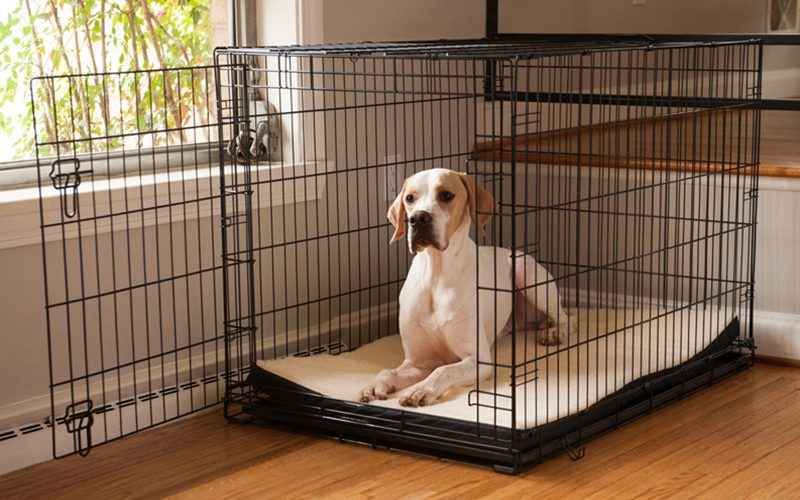Copyright © 2022 ATX K9 All Rights Reserved.
Sitemap

Many of us can recall the old classic song, “Don’t Fence me in”:
“Oh, give me land, lots of land, under starry skies/ don’t fence me in.”
But is this how we should be approaching crate training with our dogs?
Crate Training: The Benefits
Crating, when done humanely (with adequate potty and play breaks), is one of the most valuable things that you can do for your dog. Beginning when they arrive home, the crate gives puppies their own “den”, a safe place to sleep and relax while their owners are away, and assists greatly with potty training. Bringing home an adult dog? The crate gives them a place of their own in a new environment and gives them a safe place to hang out while their new family is gone for work or errands.
At some point in most dog’s lives, they will have to be crated. This could be on a flight, at an Austin dog boarding facility, while at an Austin dog training facility, or at the veterinarian’s office. When your dog is trained to enjoy his crate, all of these places become much less stressful for them.
What Kind of Crate?
There are two main types of crates on the market these days: plastic and wire.
Wire crates are wonderful because they allow the dog to see the surroundings and can be simple to clean due to removable trays in the bottom of the crate. However, wire crates can also make dogs anxious because they don’t naturally provide a ‘den-like’ space – the openness of the crate doesn’t feel secure to many dogs. Additionally, male dogs often learn to urinate out of the sides of wire crates.
Plastic crates provide a naturally den-like enclosure while still having plenty of ventilation. These crates can be more difficult to clean, but do contain messes better (which is helpful during the potty training stage). They also discourage urinating because the dog has no way to escape his own mess.
Importance of Crate Training
Until your dog can be trusted to not chew or get into items while you are away from home, a crate is a wonderful way to keep your pup safe. Dogs that chew up items or are known for ingesting items (such as trash, left out food, etc) are at an increased risk for medical issues including blockages and poisoning. The crate provides a safe place for the dog until he can be trusted loose in the house.
Also, it has been proven that the safest place for your canine companion in the vehicle is inside of a crate. Doggie seats and seatbelts have proven to be nearly useless, while crates have been seen to save the lives of dogs (proven both anecdotally and in crash tests).
Steps to Crate Training Your Dog
Allow him to explore the crate throughout the day. Toss treats into the crate and praise him for getting them. If he likes toys, toss toys into the crate as well. Begin a positive association with the crate by feeding his meals inside of the crate – first with the door open and then with the door shut as he becomes more comfortable. At night, put your dog in the crate and place the crate beside your bed. Many dogs prefer that the crate is covered with a blanket to make it dark. If your dog cries, gently ‘shush’ him and put your hand beside the crate to allow him to smell you. Do not allow your dog to exit the crate unless they are calm.
Crate training is one of the simplest, yet most beneficial, skills to master with your dog. The crate provides safety, a den-like structure, and security to your dog.
Copyright © 2022 ATX K9 All Rights Reserved.
Sitemap